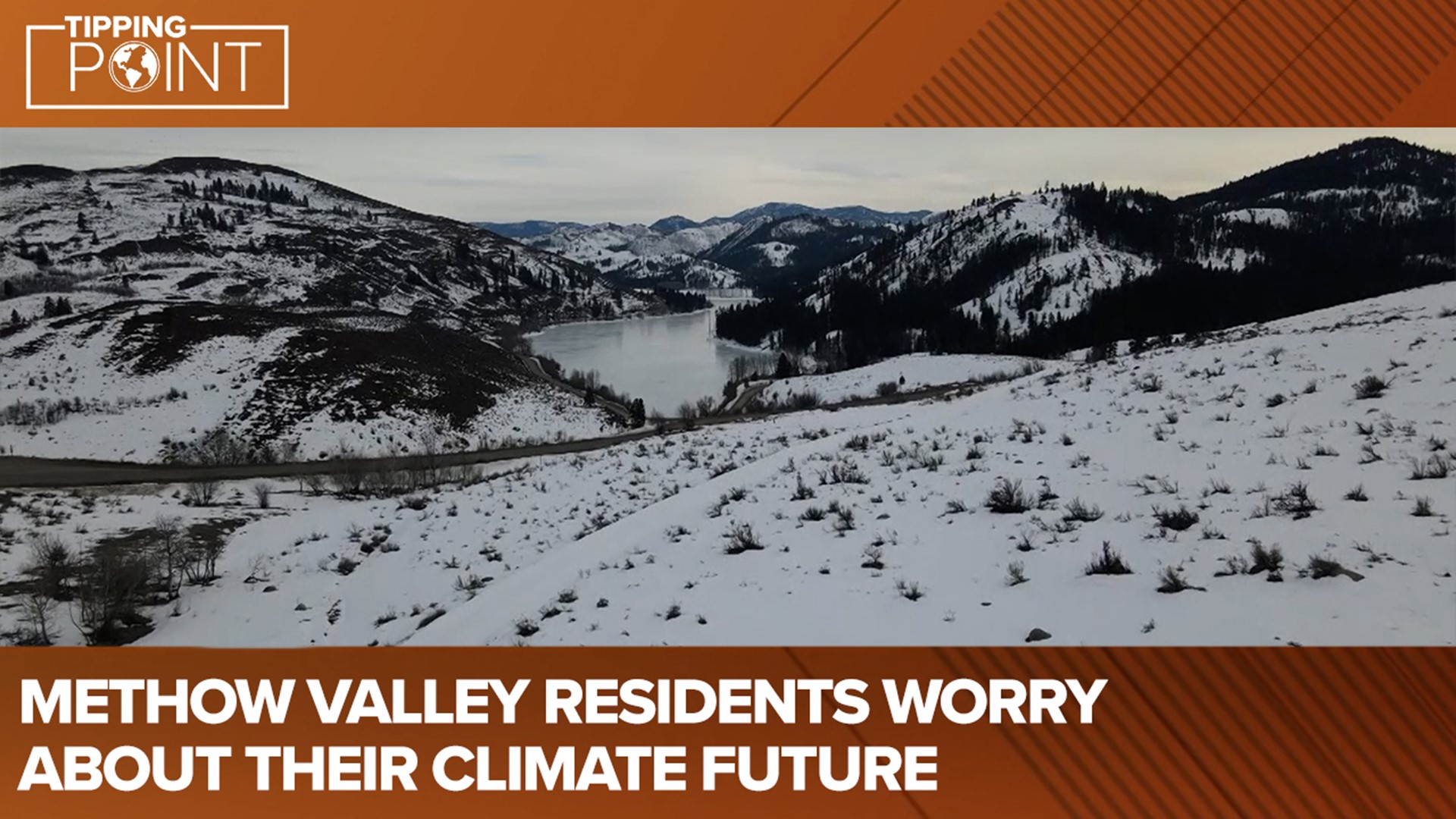METHOW, Wash. — If the environment is the spine for the Methow Valley, it almost had its back broken in the past year. While it is still standing, the threat has made residents here start to think about an uncomfortable truth.
"Do you believe in climate change? I said, 'I don't have to believe, it's here. I know it's here. I've got the evidence, belief has nothing to do with it,'" said an adamant Alan Fahnestock on a recent February day while he stood outside a Mazama fire station. "Climate change is clearly a huge issue."
Fahnestock is a long-time Methow Valley resident and volunteer firefighter who watched as the Cedar Creek and Cub Creek fires combined to burn more than 125,000 acres in the summer of 2021. It's more square mileage than Seattle and Tacoma combined. The fire lapped up at the Freestone Inn nearby and perilously close to the Sun Mountain Lodge as well, two year-round destinations.
But it also damaged the lifeblood of this region's winter tourism season, the cross country ski trails. The Methow Trails is the largest Nordic system in America. It's a pristine, groomed, outdoor wonderland that has been the training grounds for dozens of elite athletes and novices as well.
The summer made this place where people chase their chance for Olympic rings looks more like a scene from "The Lord of the Rings." National news outlets compared the air quality to Mordor because the sky was so black and the air stagnant. Trees that lined the trails burned and yet others near the Chickadee trailhead were wiped out.
"The urgency is a lot more when fire touches half your network. It's real. It's here. It's consistent each year. It's a consistent presence in our community," says Methow Trails Executive Director James DeSalvo. "It's not just the lack of snow, it's more extreme summers." DeSalvo calls the trails-related tourism the "cog and hub to not just recreation here, but also the economy and helps how people can benefit and survive here." He said it accounts for close to $8 million annually in the valley of roughly 2,000 full-time residents. He has already begun working with the forest service to try and figure out whether trails can be rerouted to higher elevations.
Over at the Loup Loup Ski Bowl, which has been around since 1958, this snow season has been nothing short of horrific. The Bowl, fifteen minutes outside Twisp, advertises it gets 150" of snow a year. This season, there has only been one-third of that, according to their official register. "I cannot remember a February this warm," admitted Executive Director Brent Nourse, who stood near an open grassy patch at the bottom of the bowl.
"It's coming into stark focus now," he said. "I think in order for us, as an organization to continue, we definitely need to expand and make sure that we're offering activities and experiences all year round. So, we are working with some other organizations to expand the mountain biking opportunities here." Those long-range plans are in development right now, he says, which would create an all-seasons configuration of the Bowl for the first time in history.
But that's the reality of the situation, he said. The conditions have changed.
It may be the biggest fight for survival here since the late 1970s when residents helped block the development of a major downhill ski resort near Mazama, citing the environmental impacts. Instead, it turned into a Nordic paradise butted up against the annual closure of Highway 20 to the north.
Fahnestock said he also believes there will be a lack of water to go around if the summer fires continue to be as severe. That's why he's posting signs and publicly pushed for $100,000 to activate a well near Mazama so firefighters don't have to travel into Winthrop to reload water during a crisis.
Right now, Fahnestock said he's met about half that goal but wants to get it done by May before the next wildfire season as the landscape continues to warm up. He said, "It's very clearly changing."

